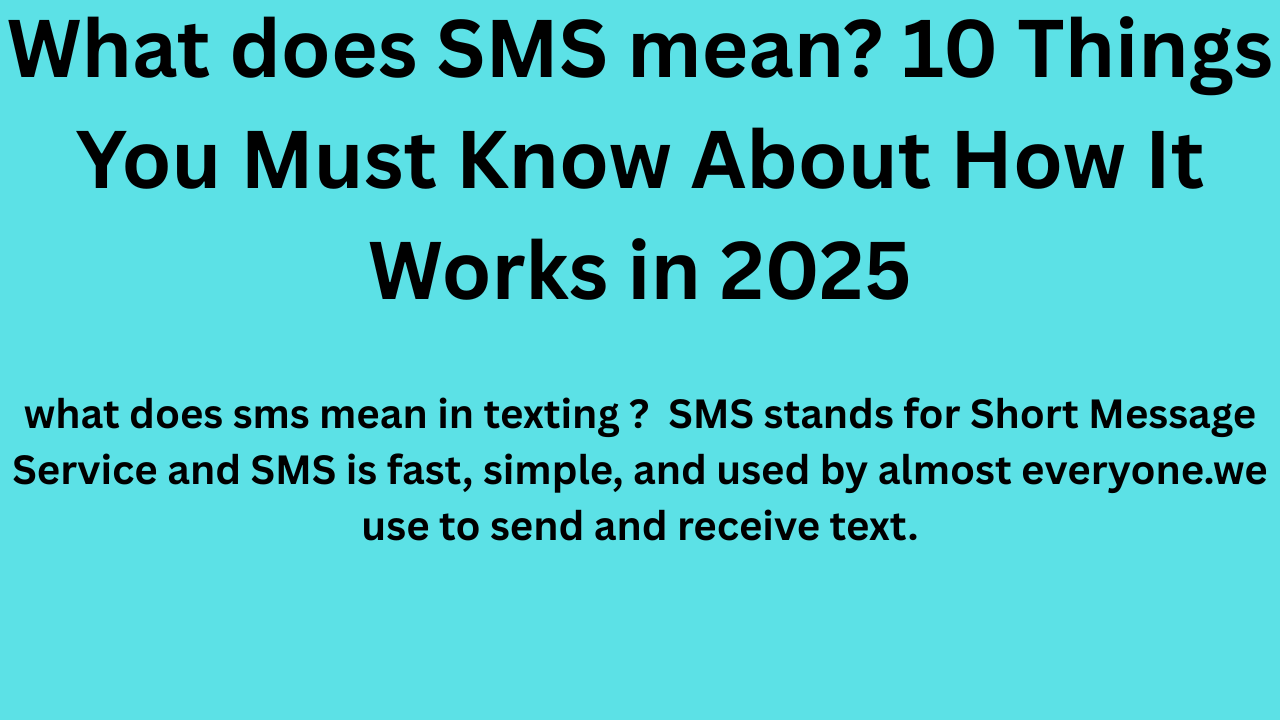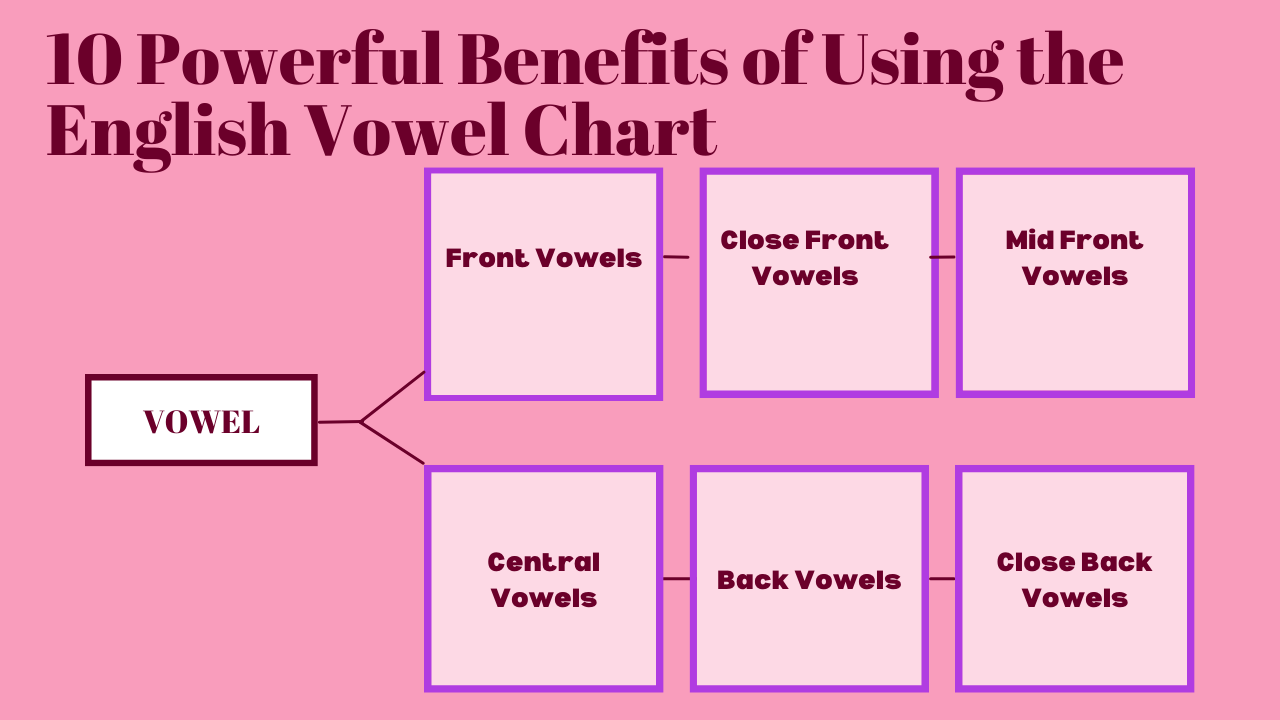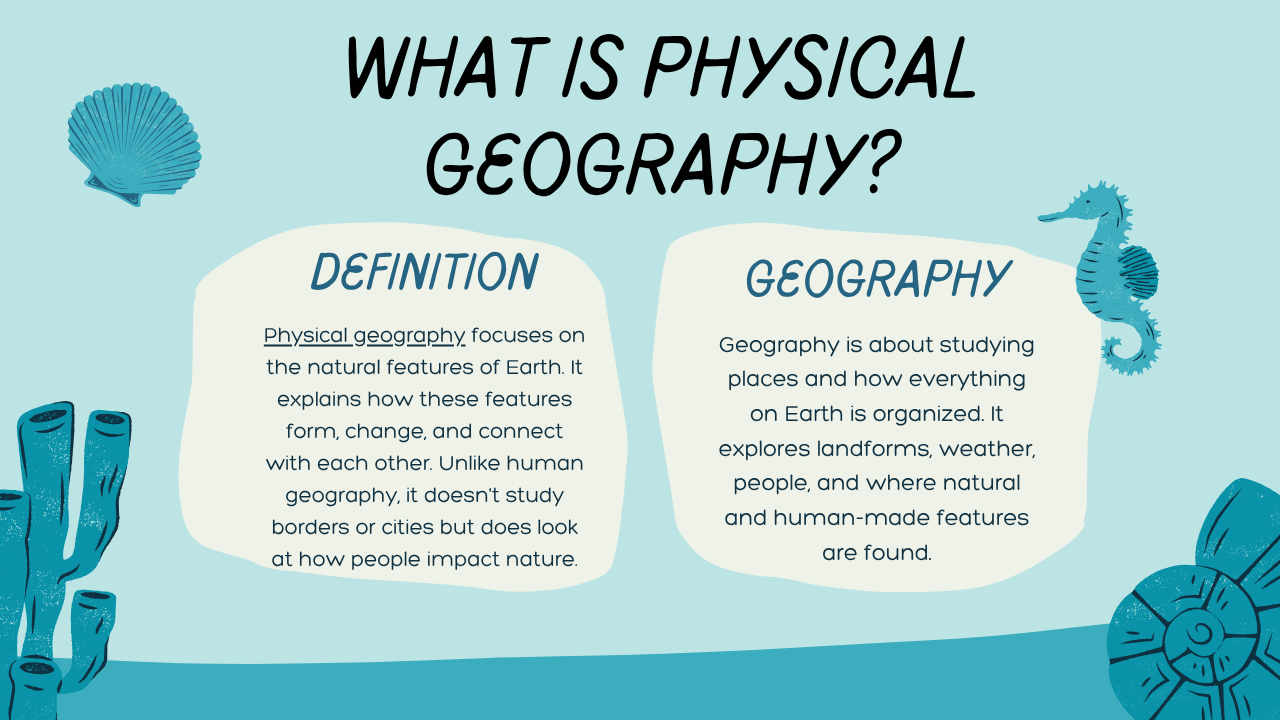| SMS (Short Message Service) is a text-only messaging method using mobile networks. It works without internet, unlike WhatsApp or iMessage. SMS messages are typically limited to 160 characters. Widely used for personal chats, alerts, and business promotions. SMS APIs allow businesses to send automated messages from websites or apps. SMS is still popular in 2025, especially in areas with limited internet access. Useful for reliable, fast communication. |
What does SMS mean in texting? It stands for Short Message Service, and it’s the most popular way people connect with businesses today. SMS is fast, simple, and used by almost everyone. In this guide, we’ll answer your key questions—so you’ll know exactly how SMS works and why sending messages may come with a cost. Whether for personal chats or business updates, understanding SMS helps you use it better.
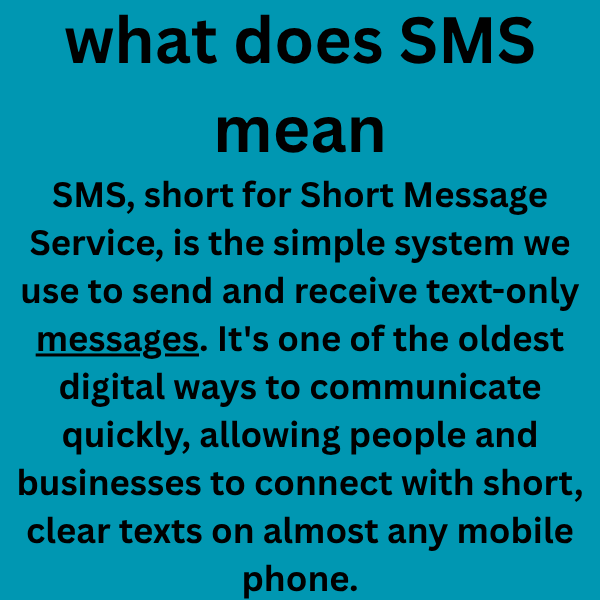
What does SMS stand for?
SMS, short for Short Message Service, is the simple system we use to send and receive text-only messages. It’s one of the oldest digital ways to communicate quickly, allowing people and businesses to connect with short, clear texts on almost any mobile phone.
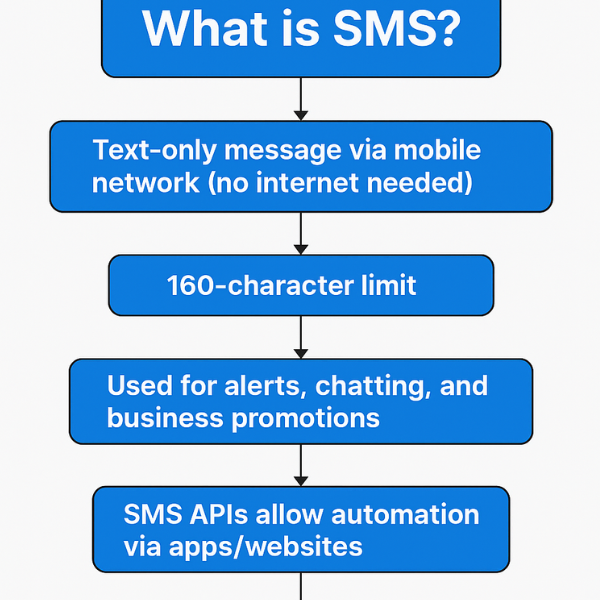
📊 Comparison Table: SMS vs. Other Messaging Services
| Feature / Service | SMS (Short Message Service) | MMS (Multimedia Messaging) | iMessage | |
|---|---|---|---|---|
| Internet Required | ❌ No | ❌ No | ✅ Yes | ✅ Yes |
| Text-Only Support | ✅ Yes | ✅ Yes | ✅ Yes | ✅ Yes |
| Media Sharing | ❌ No | ✅ Yes (Images, Video, Audio) | ✅ Yes | ✅ Yes |
| Max Length | 160 characters | Depends on file size | No limit | No limit |
| Cross-Platform | ✅ Yes (all phones) | ✅ Yes | ❌ Apple only | ✅ Yes |
| Encryption | ❌ No | ❌ No | ✅ End-to-end | ✅ End-to-end |
| Cost | 📱 Carrier charges may apply | 💰 Often higher than SMS | 🌐 Free via data | 🌐 Free via data |
| Works without Internet | ✅ Yes | ✅ Yes | ❌ No | ❌ No |
How Does SMS Work? (Simple Explanation)
What does SMS mean in texting? It stands for Short Message Service, and it’s the most common way we send text messages without needing the internet. But have you ever wondered how that little message travels from one phone to another? Let’s break it down in an easy way:
- You type a text message and enter the other person’s phone number.
- Your phone sends the message to a server called the SMSC (Short Message Service Centre).
- The SMSC checks where the recipient is and finds the right mobile network.
- The message is sent through the mobile network to the other person’s SMSC.
- If the recipient’s phone is off or has no signal, the SMSC holds the message temporarily.
- When the phone is available again, a notification is sent to their phone.
- The phone retrieves the message from the SMSC.
- The message appears on their screen—successfully delivered!
- You may even receive a small confirmation showing the message was delivered.
Unlike internet-based apps, SMS works through special mobile signal channels. This means it doesn’t need Wi-Fi or mobile data—just a basic phone signal. That’s why SMS is so reliable, even in places with poor network coverage.
So the next time you wonder, “What does SMS mean in texting?”, just remember it’s the simple and smart system behind almost every basic text message you send.
What is an SMS API?
An SMS API (Short Message Service Application Programming Interface) is a tool that allows software applications to send and receive text messages automatically. Instead of sending texts manually from a phone, businesses and developers can use an SMS API to connect their systems—like websites, apps, or CRMs—to SMS services. This makes it easy to send alerts, confirmations, or promotions directly to users’ phones, much like how a ride-hailing app notifies you when your car arrives.
What Are the Benefits of Using an SMS API?
Using an SMS API gives businesses a powerful and flexible way to connect with their customers through text messaging. Here are some key benefits that make it a valuable tool:
1. Automation Made Easy
An SMS API allows you to automate the entire messaging process. Instead of sending texts manually, you can schedule or trigger messages automatically—saving time, reducing errors, and improving efficiency across your operations.
2. Seamless Integration
SMS APIs integrate smoothly with your existing systems, like CRM, e-commerce platforms, or mobile apps. Whether you’re using tools like Zapier or a custom backend, the API acts as a bridge to bring SMS capabilities into your current workflow.
3. Easy to Scale
Whether you’re sending a handful of messages or thousands each day, SMS APIs are built for scalability. As your business grows, you won’t need to change your process—just increase your usage, and the API can handle it.
4. Personalised Messaging
Thanks to the API’s ability to pull data from your system, you can personalise each message. Add the customer’s name, order number, or delivery time to create a tailored experience that builds trust and improves engagement.
5. Real-Time Communication
Need to send an urgent alert, appointment reminder, or flash sale? SMS APIs make it possible to reach customers instantly, no matter where they are. With a high open rate compared to emails, SMS is one of the fastest ways to get your message seen. According to Twilio, 90% of SMS messages are read within 3 minutes.
In short, using an SMS API is a smart move for any business that values efficiency, customer experience, and fast communication.
FAQs
What does SMS mean for texting?
SMS stands for Short Message Service. It’s the basic type of text messaging used on most mobile phones. When you send a simple text with words only (no images or videos), you’re using SMS. It’s fast, reliable, and doesn’t require an internet connection.
What is the difference between a text message and a text message notification?
A text message is the actual message you receive from someone, while a text message notification is the alert your phone shows when a new message arrives, like a sound, vibration, or banner pop-up.
Why do people use SMS texting?
People use SMS because it’s simple, quick, and works on nearly every phone, even without internet. It’s great for reminders, updates, and casual conversations. Businesses also use SMS for alerts, promotions, and customer service.
Should I use SMS or MMS?
Use SMS if you’re sending plain text only. Choose MMS (Multimedia Messaging Service) if you want to include pictures, videos, or audio. Just remember, MMS usually requires mobile data and may cost more.
Is SMS texting normal?
Yes, it’s completely normal and very common! SMS has been used worldwide for decades and remains a standard way to send text messages, especially when internet-based apps like WhatsApp or Messenger aren’t available.
Is WhatsApp an SMS?
No, WhatsApp is not SMS. It’s an internet-based messaging app. You need Wi-Fi or mobile data to send messages on WhatsApp, while SMS works over your phone network, even without the internet.
What do SMS alerts mean?
SMS alerts are messages sent to notify you about something important, like a bank transaction, a delivery update, or an appointment reminder. They’re short, timely, and usually come from businesses or service providers.
How does SMS differ from text?
All SMS messages are text messages, but not all text messages are SMS. “Text message” is a general term. If a message contains only text and is sent over the mobile network, it’s SMS. If it has media or uses an app, it’s something else, like MMS or chat apps.
What does it mean when you send a text message and it says “sent as SMS”?
This means your message was delivered using SMS instead of chat or internet messaging. It often happens when the recipient isn’t using a data connection or their phone doesn’t support internet-based messaging.
How do I know if my SMS has been sent or not?
Most phones show a “Sent” or “Delivered” status under the message. If there’s no error icon or warning, the SMS likely went through. Some phones may also send a delivery report if you’ve enabled that setting.
What does it mean when an SMS is sent but not delivered?
If your SMS says “sent” but not “delivered,” it means your phone sent it to the network, but the recipient’s phone hasn’t received it yet. Their phone might be off, out of coverage, or have issues receiving messages.

